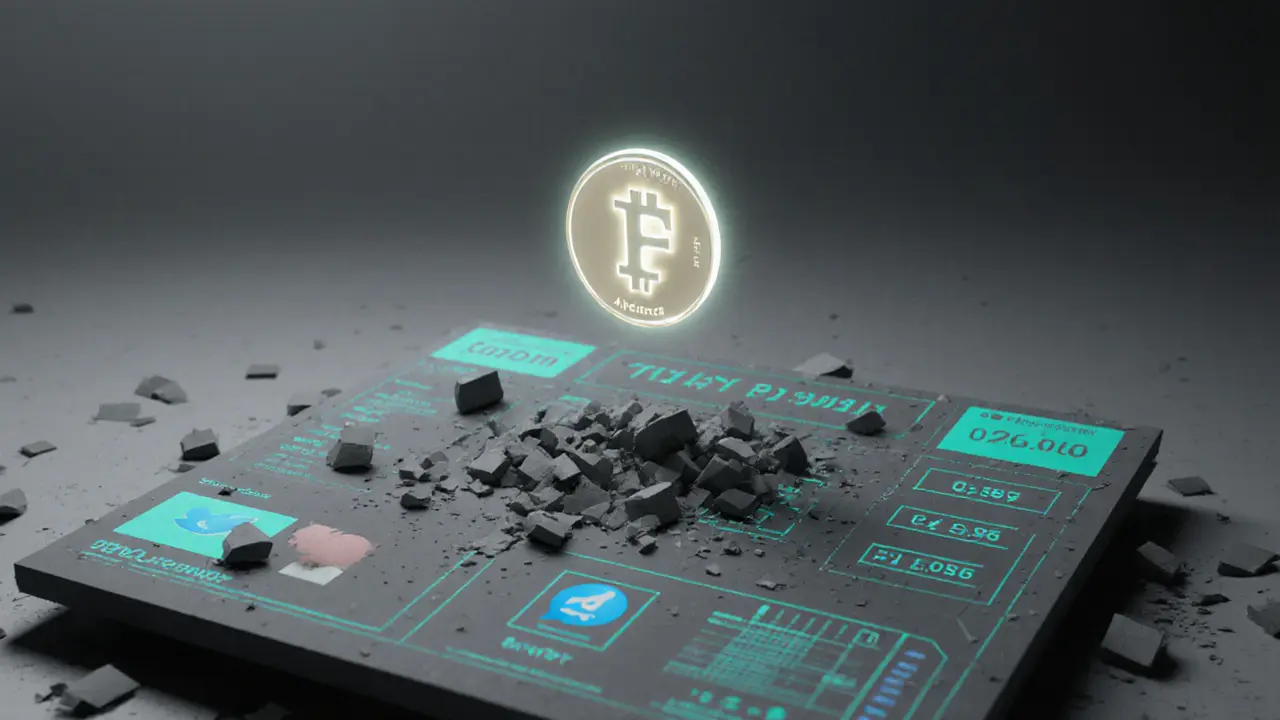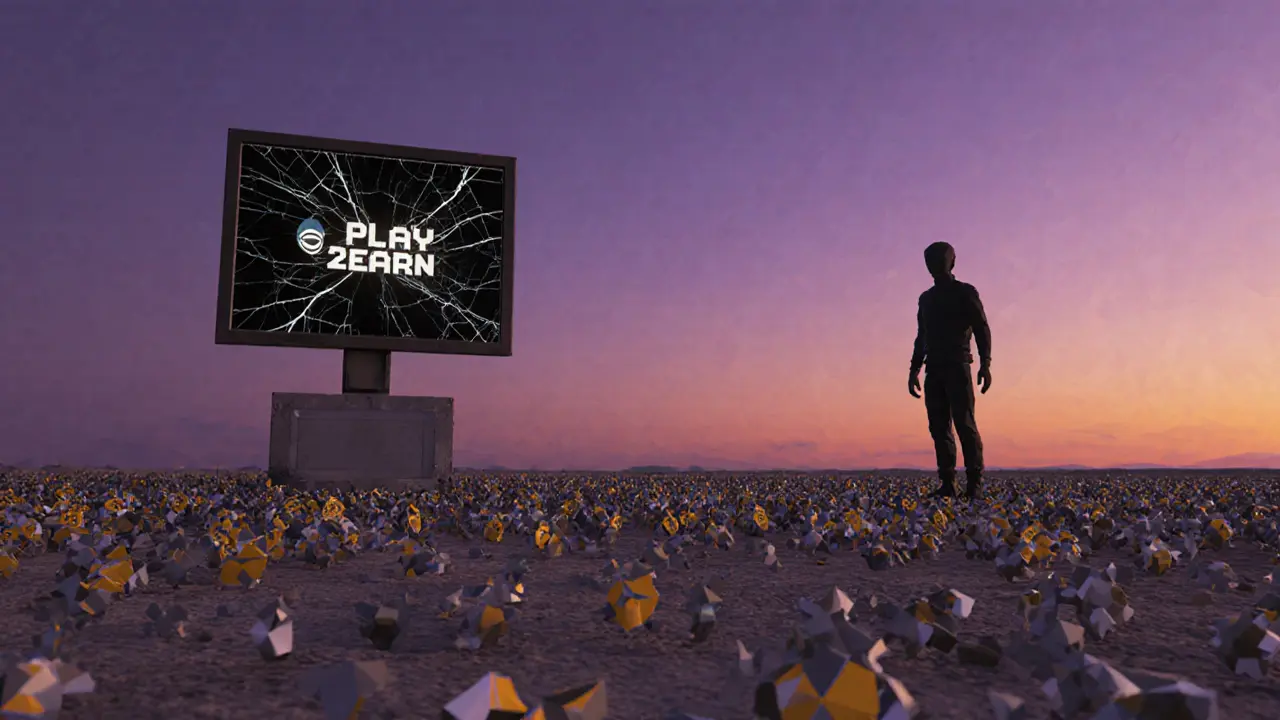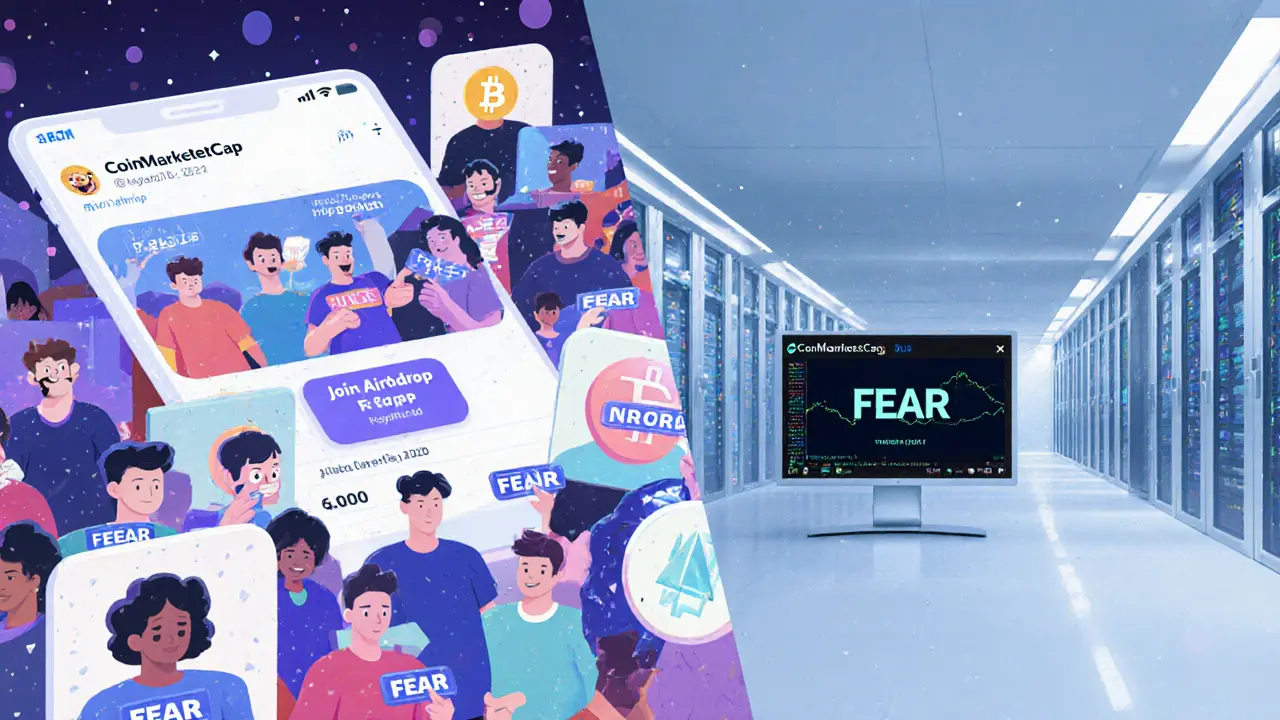FEAR Token Airdrop: What Happened and Why It Doesn't Matter Anymore
 Nov, 17 2025
Nov, 17 2025
FEAR Token Value Calculator
Calculate Your FEAR Token Value
How much are your 2021 FEAR tokens worth today?
Current Value
$0.00
(Current price: $0.008443)
Based on current market price
Historical Value Comparison
At 2021 launch price: $0.001 per token
$0.00
(2021 value)
0.00%
Key Insight: FEAR tokens were worth $0.04 each at the time of your airdrop (assuming 40 tokens). Today they're worth $0.008443 each - a 79% decrease.
Important Note: The FEAR token is an example of a failed airdrop project. Its value reflects the market's reality that most free tokens from 2021 airdrops have become worthless.
Back in 2021, if you were active on Twitter or Telegram and kept an eye on CoinMarketCap, you might’ve seen a pop-up offering free FEAR tokens. It looked easy: sign up, follow a few accounts, and wait for tokens to land in your wallet. Thousands did. Today, most of them have forgotten about it. And that’s the story of FEAR token - not a failed project, but one that never really started.
How the FEAR Token Airdrop Actually Worked
The FEAR token airdrop didn’t come from a secretive team hiding behind a whitepaper. It was hosted directly on CoinMarketCap, one of the most trusted crypto portals at the time. Users had to log into their CoinMarketCap account, click ‘Join This Airdrop,’ and complete two simple tasks: follow the official FEAR Twitter account and join their Telegram group. That’s it. No wallet connections. No gas fees. No smart contract interactions. Just social media checkboxes. The distribution was split into two phases. First, 2,000 Play2Earn NFT tickets were handed out, each worth 25 FEAR tokens. Then, a larger round followed: 20,000 FEAR tokens total, divided among over 500 winners. That’s roughly 40 tokens per person on average. At the time, FEAR was trading around $0.001. So each winner got about $0.04. Not life-changing. But free money, right? The design was typical of 2021’s airdrop culture - low barrier, high volume. Projects weren’t trying to build loyal users. They were trying to build hype. FEAR was no different. It positioned itself as a gaming token, promising future Play2Earn features. But unlike Axie Infinity or The Sandbox, it never delivered anything beyond the airdrop.What FEAR Token Is Worth Today
As of November 2025, FEAR trades at $0.008443. That’s up from its 2021 launch price, sure. But look closer. The 2025 price forecasts predicted a range between $0.0066 and $0.0093. FEAR is sitting right in the middle. No surprise surge. No collapse. Just… stagnation. Some models project it might hit $0.011 by 2028. That’s a 16% gain from today’s price. For context, Bitcoin has doubled that in six months. Ethereum’s Layer 2s have grown 300%+ in the same time. FEAR’s growth curve looks like a flat line with a slight upward tilt - not a rocket, not even a balloon. Why? Because there’s no real product. No game. No active development team posting updates. No community events. No new tokenomics. No liquidity pools. No listings on major exchanges beyond small decentralized ones. The website still exists, but it hasn’t been updated since 2022. The Twitter account has gone quiet. Telegram has fewer than 1,200 members - most of them airdrop hunters who left after claiming their tokens.Why FEAR’s Airdrop Model Is Obsolete
FEAR’s airdrop was a product of its time. In 2021, crypto was wild. Projects could grow by just getting people to follow them on Twitter. Airdrops were marketing tools, not community-building engines. Today, that’s dead. Modern airdrops - like those from LayerZero, Scroll, or EigenLayer - don’t care if you followed a tweet. They track on-chain behavior. Did you bridge assets between chains? Did you stake? Did you use the protocol for more than 30 days? Did you interact with multiple wallets? Projects now use Soulbound Tokens to lock your identity and prevent bots from farming dozens of wallets. FEAR didn’t need any of that. You didn’t even need a crypto wallet to join. You just needed a Twitter handle. That’s why today’s experienced users laugh at FEAR’s approach. It wasn’t a community. It was a list of email addresses. The regulatory landscape also changed. In 2021, no one asked where you lived. Today, most airdrops block users from the U.S., Canada, or the EU because of securities laws. FEAR never had those filters. It was a free-for-all. Which makes its distribution legally questionable by today’s standards.
Why FEAR Never Became a Real Project
The Play2Earn boom of 2021-2022 was fueled by hype, not gameplay. Axie Infinity had a real game with a grinding economy. The Sandbox had voxel-based world-building. FEAR had… nothing. No game. No roadmap. No team photos. No GitHub commits. No Discord moderation. No developer updates. There are no credible reports of a development team. No interviews. No LinkedIn profiles. No funding rounds. No partnerships with game studios. No NFT collections beyond the initial 2,000 tickets. The project seemed to exist only to run the airdrop and then vanish into the background noise of crypto’s endless churn. Compare that to today’s top gaming tokens. Even small projects like Gala or Immutable X have active game releases, weekly dev logs, and community governance votes. FEAR has none of that. It’s a ghost token - alive on price charts, dead in everything else.Should You Still Care About FEAR Token?
If you’re holding FEAR tokens from the 2021 airdrop: you’re not alone. But you’re also not ahead. The tokens are worth less than a coffee. You could sell them now for $0.0084 each. Or hold them for a potential 16% rise by 2028. Either way, it’s not an investment. It’s a curiosity. If you’re looking to join a new airdrop: avoid anything that asks you to just follow Twitter. The days of free tokens for social media are over. Look for projects that require real on-chain activity. Check if they have open-source code. See if their team has public profiles. Read their Discord announcements. If the project feels like a meme, it probably is. If you’re researching crypto history: FEAR is a perfect case study. It shows how the industry moved from hype-driven airdrops to value-driven participation. It’s a snapshot of crypto’s transition from carnival to laboratory.


garrett goggin
November 17, 2025 AT 17:50FEAR token? More like FOMO trap disguised as a crypto project. They didn't even bother to fake a roadmap. Just slapped a name on a spreadsheet and called it a day. I'm surprised the SEC didn't come knocking - this was a regulatory playground for bots and bots only. The fact that people still hold it is proof crypto's collective memory is shorter than a TikTok trend.
Bill Henry
November 17, 2025 AT 18:13lol i still have like 40 fear tokens in my wallet and i forgot i even claimed them. i think i got them while procrastinating on my job application in 2021. now i just use them as a joke to show my friends how dumb crypto was back then. we all thought we were getting rich but we were just collecting digital confetti.
Jess Zafarris
November 19, 2025 AT 11:51It’s wild how FEAR became the poster child for crypto’s shallow phase - the era where ‘community’ meant a Twitter follower count and ‘innovation’ meant not asking for a wallet connection. Today’s airdrops are like PhDs compared to FEAR’s high school pop quiz. The real tragedy? The 2,000 NFT tickets probably had more soul than the entire project’s roadmap.
Peter Rossiter
November 19, 2025 AT 15:36Ella Davies
November 21, 2025 AT 11:49I remember seeing the airdrop pop-up and thinking ‘this is too easy’ - and I was right. I didn’t claim it. Best decision I ever made. The real lesson here isn’t about FEAR - it’s about trusting projects that don’t need you to follow a tweet to prove you’re ‘part of the community’.